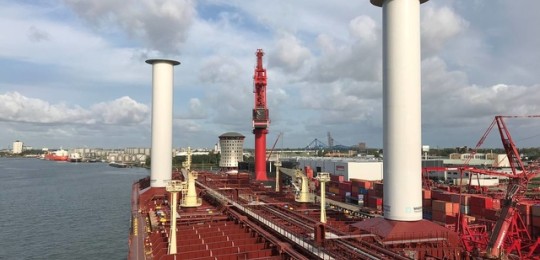Cargo ships return to wind power, but already without sails
-

This is a modern version of sails - rotary sails. They are installed on the so-called Flettner ships, which are set in motion on the basis of the Magnus effect
-
Until quite recently, approximately in the middle of the 19th century, the glorious two thousand-year epoch of the sailing fleet seemed to have ended forever. However, thanks to the achievements of science, the energy of the wind again forces modern ships to move.
This is a modern version of sails - rotary sails. They are installed on the so-called Flettner ships, which are set in motion on the basis of the Magnus effect. A characteristic example of his action is the flight of a "swirling" football or tennis ball.
How it works? The airflow blows the rotating cylinder from opposite sides with different speeds, as a result of which a pressure difference arises and a force vector perpendicular to the flow is formed. It also sets in motion the object on which the rotating cylinder is fixed. Approximately the lift on the wing of the aircraft is also created.
While cargo ships with turboparas are very rare, it is obvious that they have serious prospects. An example of this is the Pelican tanker, owned by the Danish ship giant, Maersk, with rotors 30.5 meters high.
According to the specialists of the company, rotary sails will save up to 10% of fuel. It would seem that not too much. In fact, Maersk spends $ 3 billion a year to buy fuel for its ships, so it's about $ 300 million in savings. If the experience with the Pelican is successful, then in time hundreds of cargo ships will turn into hybrid sailboats.







